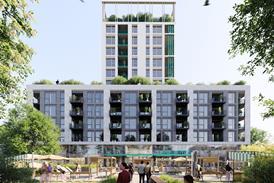- Home
- Intelligence for Architects
- Subscribe
- Jobs
- Events

2025 events calendar Explore now 
Keep up to date
Find out more
- Programmes
- CPD
- More from navigation items
Material passports: the key to carbon reduction, greater component reuse and more sustainable construction

Logging the details of the products and materials used on projects so they can have a second life after demolition has been discussed but never practised on a large London construction project – until now, Thomas Lane reports
Construction produces 68 million tonnes of demolition waste a year, 30% of the UK’s total. While 92% of this waste is recovered, most of it is downcycled to products of a lesser value. So reusing rather than downcycling materials could significantly reduce the industry’s carbon emissions.
As buildings become much more energy efficient and with the welcome focus on reducing upfront embodied carbon, the reuse of materials from demolished buildings is now the new front line for construction’s carbon reduction efforts. Forward-thinking developers are already reusing materials on projects to cut their carbon footprint – and this is a good marketing tool too.
This content is available to registered users | Already registered?Login here
You are not currently logged in.
To continue reading this story, sign up for free guest access
Existing Subscriber? LOGIN
REGISTER for free access on selected stories and sign up for email alerts. You get:
- Up to the minute architecture news from around the UK
- Breaking, daily and weekly e-newsletters
Subscribe to Building Design and you will benefit from:

- Unlimited news
- Reviews of the latest buildings from all corners of the world
- Technical studies
- Full access to all our online archives
- PLUS you will receive a digital copy of WA100 worth over £45
Subscribe now for unlimited access.






